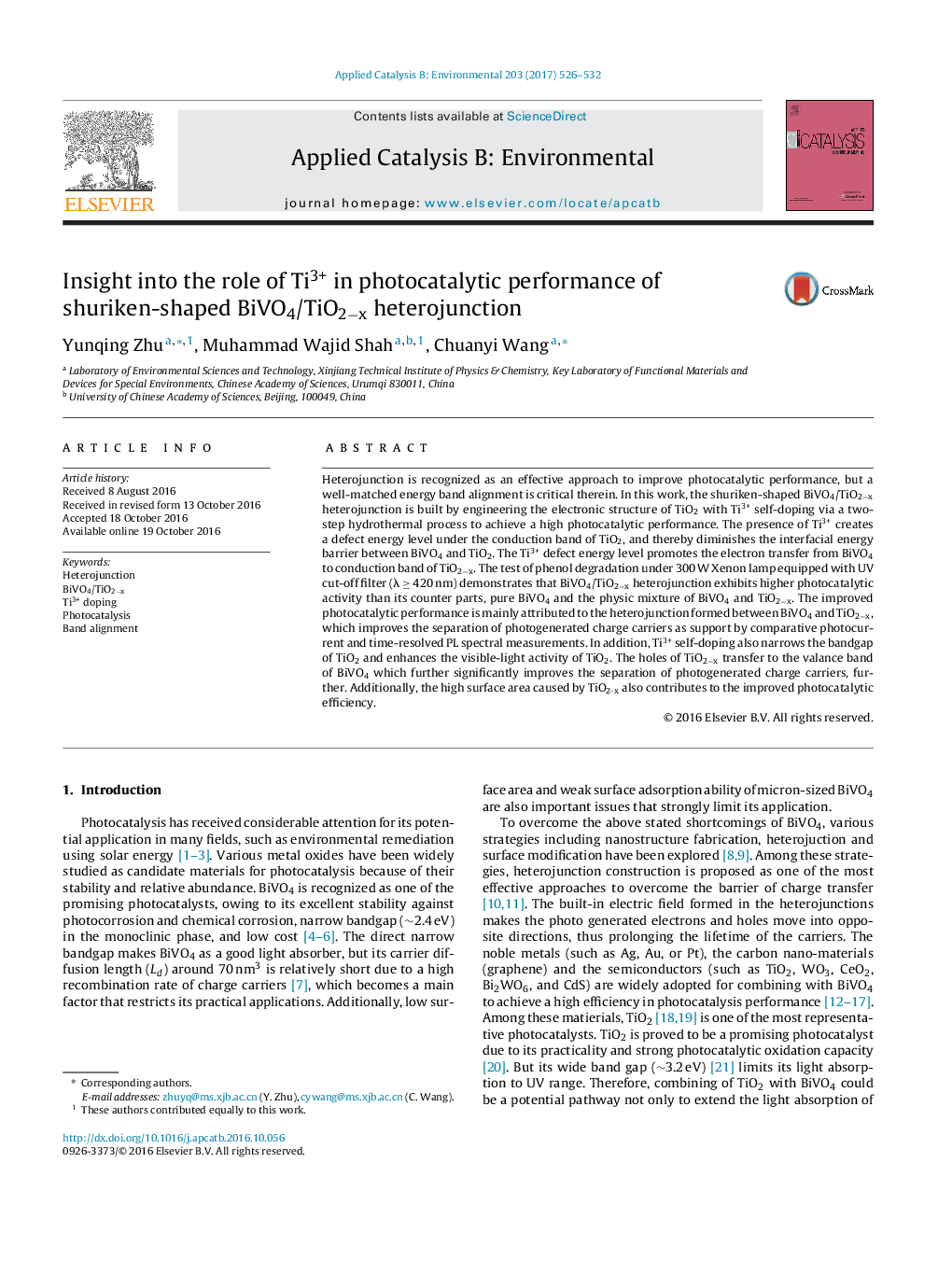| Article ID | Journal | Published Year | Pages | File Type |
|---|---|---|---|---|
| 6454515 | Applied Catalysis B: Environmental | 2017 | 7 Pages |
â¢BiVO4/TiO2âx heterojunction is built via a two-step hydrothermal process.â¢Self-doped of Ti3+ creats a donor energy level under the conduction band of TiO2.â¢Ti3+ donor energy level satisfies the band-matching of BiVO4/TiO2âx heterojunction.â¢BiVO4/TiO2âx heterojunction exhibits high photocatalytic activity.
Heterojunction is recognized as an effective approach to improve photocatalytic performance, but a well-matched energy band alignment is critical therein. In this work, the shuriken-shaped BiVO4/TiO2âx heterojunction is built by engineering the electronic structure of TiO2 with Ti3+ self-doping via a two-step hydrothermal process to achieve a high photocatalytic performance. The presence of Ti3+ creates a defect energy level under the conduction band of TiO2, and thereby diminishes the interfacial energy barrier between BiVO4 and TiO2. The Ti3+ defect energy level promotes the electron transfer from BiVO4 to conduction band of TiO2âx. The test of phenol degradation under 300 W Xenon lamp equipped with UV cut-off filter (λ â¥Â 420 nm) demonstrates that BiVO4/TiO2âx heterojunction exhibits higher photocatalytic activity than its counter parts, pure BiVO4 and the physic mixture of BiVO4 and TiO2âx. The improved photocatalytic performance is mainly attributed to the heterojunction formed between BiVO4 and TiO2âx, which improves the separation of photogenerated charge carriers as support by comparative photocurrent and time-resolved PL spectral measurements. In addition, Ti3+ self-doping also narrows the bandgap of TiO2 and enhances the visible-light activity of TiO2. The holes of TiO2âx transfer to the valance band of BiVO4 which further significantly improves the separation of photogenerated charge carriers, further. Additionally, the high surface area caused by TiO2-x also contributes to the improved photocatalytic efficiency.
Graphical abstractDownload high-res image (229KB)Download full-size image
